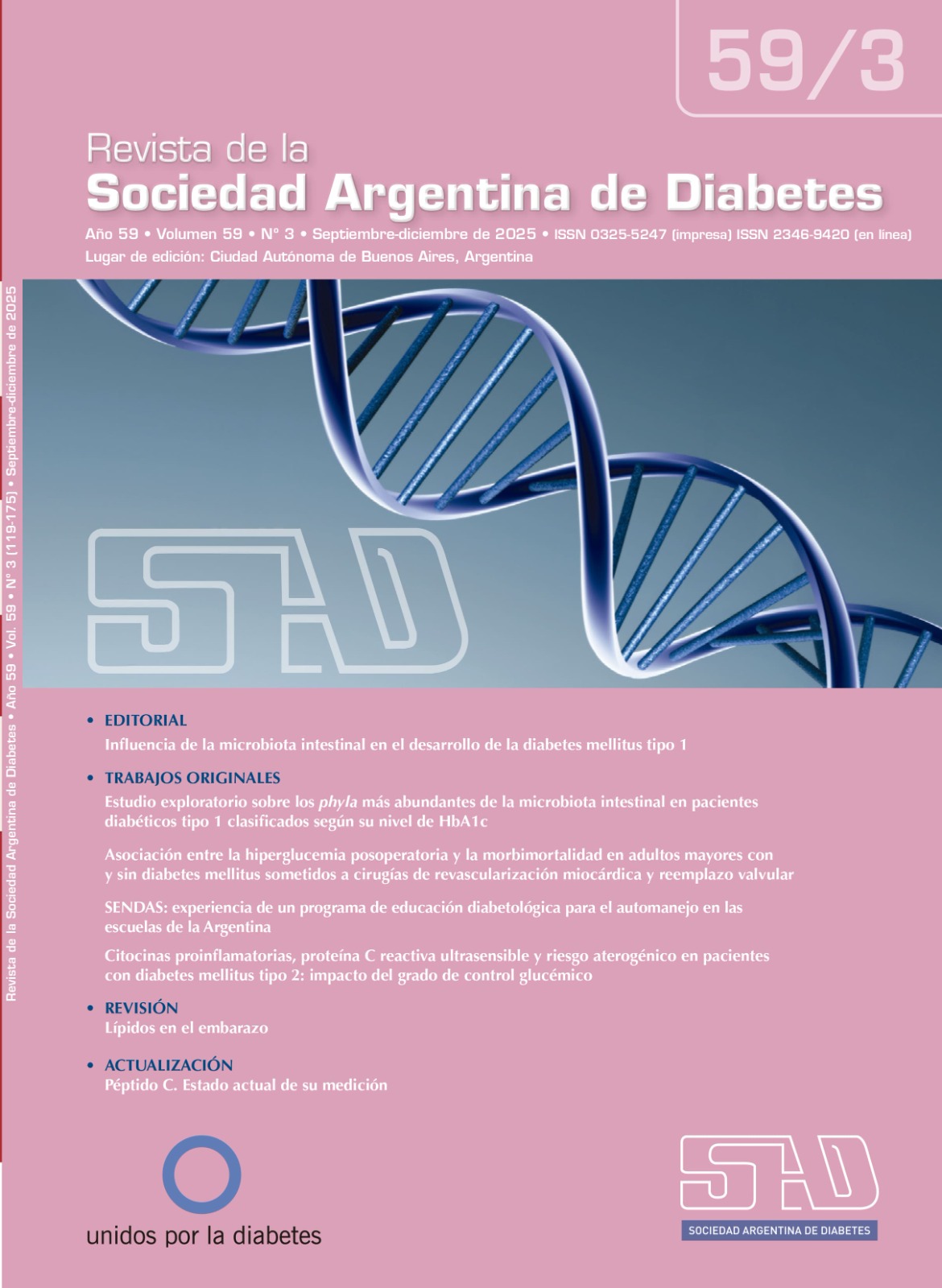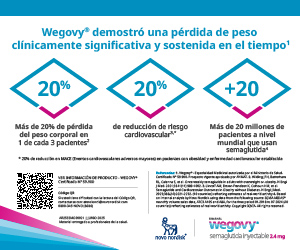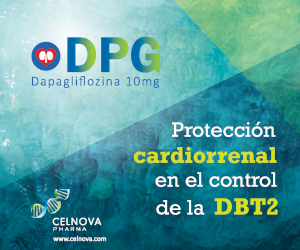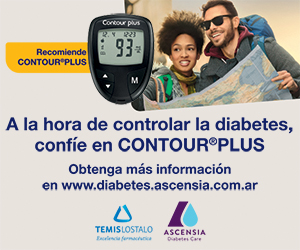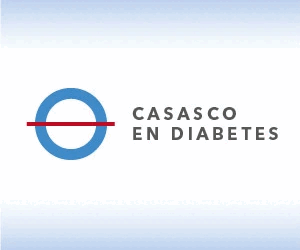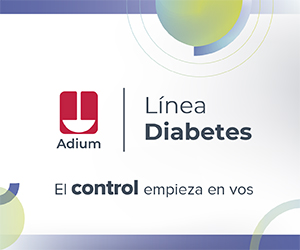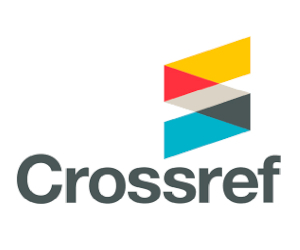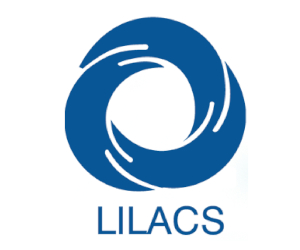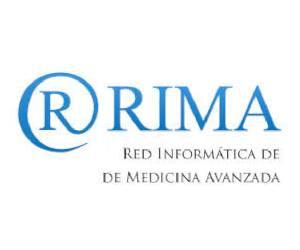Recomendaciones en predicción de diabetes mellitus tipo 1. Detección, estadificación y estrategias para preservar la función de las células beta en niños, niñas y adolescentes con diabetes tipo 1
DOI:
https://doi.org/10.47196/diab.v59i3.1293Palabras clave:
diabetes tipo mellitus 1, predicción, niños y adolescentesResumen
Introducción: La detección de la diabetes mellitus tipo 1 (DM1) en etapas preclínicas forma parte del cambio de paradigma mundial en la evolución natural de la enfermedad. En los últimos años la investigación sobre la patogénesis de la DM1 ha generado diferentes modelos predictivos y terapias que pueden retrasar la aparición clínica de la enfermedad y disminuir la pérdida de la función de las células beta después del diagnóstico.
Objetivos: brindar recomendaciones sobre detección, estadificación y preservación de la célula beta de utilidad para el equipo de salud que contribuya al seguimiento de estos pacientes con DM1 en estadios tempranos.
Materiales y métodos: se convocó a un grupo de expertos, miembros del Comité Pediátrico de la Sociedad Argentina de Diabetes (SAD) y otros miembros de la SAD expertos en el tema, para revisar la evidencia disponible y elaborar las recomendaciones.
Resultados: en el documento se contextualiza la detección oportuna de anticuerpos específicos en la población general o de riesgo genético, y se detalla el seguimiento metabólico en personas con DM1 preclínica. También se elaboran estrategias de prevención primaria y secundaria.
Conclusiones: en concordancia con la evidencia científica en el momento actual, se describen posibles alternativas terapéuticas en estas etapas tempranas de prevención de la enfermedad.
Citas
I. Atkinson MA, Eisenbarth GS, Michels AW. Type 1 diabetes. The Lancet 2014;383(9911)60-82.
II. Bluestone JA, Herold K, Eisenbarth G. Genetics, pathogenesis and clinical interventions in type 1 diabetes. Nature 464 2010; (7293):1293-1300.
III. Redondo MJ, Hagopian WA, Oram R, et al. The clinical consequences of heterogeneity within and between different diabetes types. Diabetologia 2020;63(10):2040-2048.
IV. Ilonen J, Lempainen J, Veijola R. The heterogeneous pathogenesis of type 1 diabetes mellitus. Nat Rev Endocrinol 2019;15(11):635-650.
V. Krischer JP, Liu X, Lernmark A, et al. Predictors of the initiation of islet autoimmunity and progression to multiple autoantibodies and clinical diabetes: the TEDDY Study. Diabetes Care 2022;45:2271-2281.
VI. Herold KC, Bundy BN, Long SA, et al. An anti-CD3 antibody, teplizumab, in relatives at risk for type 1 diabetes. N Engl J Med 2019;381:603-613.
VII. Hekkala AM, et al. Ketoacidosis at diagnosis of type 1 diabetes. Effect of prospective studies with newborn genetic screening and follow up of risk children. Pediatr Diabetes, 2018;19(2):314-319
VIII. Smith LB, et al. Family adjustment to diabetes diagnosis in children. Can participation in a study on type 1 diabetes genetic risk be helpful? Pediatr Diabetes 2018;19(5):1025-1033.
IX. Houben J, et al, The emotional well-being of parents with children at genetic risk for type 1 diabetes before and during participation in the POInT-study. Pediatr Diabetes 2022;23(8):1707-1716.
X. O'Donnell HK, et al. Anxiety and risk perception in parents of children identified by population screening as high risk for type 1 diabetes. Diabetes Care 2023;46(12):2155-2161.
XI. Wenzlau JM, et al. New antigenic targets in type 1 diabetes. Curr Opin Endocrinol Diabetes Obes 2008;15:315-20.
XII. Besser R, Bell K, Couper J, et al. ISPAD Clinical Practice Consensus Guidelines 2022: Stages of type 1 diabetes in children and adolescents. Pediatr Diabetes 2022; 23:1175-1187.
XIII. Haller MJ, Bell KJ, Besser REJ, et al. ISPAD Clinical Practice Consensus Guidelines 2024. Screening, staging, and strategies to preserve beta cell function in children and adolescents with type 1 diabetes. Horm Res Paediatr 2024;97(6):529:545. doi: 10.1159/000543035.
XIV. Ziegler AG, et al. Seroconversion to multiple islet autoantibodies and risk of progression to diabetes in children. JAMA 2013;309(23):2473-9.
XV. Krischer JP, et al. The 6 year incidence of diabetes-associated autoantibodies in genetically at-risk children: the TEDDY study. Diabetologia 2015;58(5):980-987.
XVI. Anand V, et al. Islet autoimmunity and HLA markers of presymptomatic and clinical type 1 diabetes. Joint analyses of prospective cohort studies in Finland, Germany, Sweden, and the U.S. Diabetes Care 2021;44(10):2269-76.
XVII. Atkinson MA, et al. Type 1 diabetes. Lancet 2014;383(9911):69-82.
XVIII. Wenzlau JM, Hutton JC. Novel diabetes autoantibodies and prediction of type 1 diabetes. Curr Diab Rep 2013;13(5):608-15.
XIX. Verge DF, et al. Prediction of type I diabetes in first-degree relatives using a combination of insulin, GAD, and ICA512bdc/IA-2 autoantibodies. Diabetes 1996; 45(7):926-33.
XX. Xu P, et al. Prognostic classification factors associated with development of multiple autoantibodies, dysglycemia, and type 1 diabetes. A recursive partitioning analysis. Diabetes Care 2016;39(6):1036-44.
XXI. Bonifacio E. Predicting type 1 diabetes using biomarkers. Diabetes Care 2015; 38(6):989-96. doi: 10.2337/dc15-0101.
XXII. Larsson HE, et al. Children followed in the TEDDY study are diagnosed with type 1 diabetes at an early stage of disease. Pediatr Diabete 2014;15(2):118-26.
XXIII. Atkinson MA, et al. Islet cell cytoplasmic autoantibody reactivity to glutamate decarboxylase in insulin-dependent diabetes. J Clin Invest. 1993;91(1):350-6. doi: 10.1172/JCI116192.
XXIV. Tuomi T. Autoantigenic properties of native and denatured glutamic acid decarboxylase: evidence for a conformational epitope. Clin Immunol Immunopathol. 1994;71(1):53-9.
XXV. Bottazzo GF, et al. Islet-cell antibodies in diabetes mellitus with autoimmune polyendocrine deficiencies. Lancet 1974;2(7892):1279-83.
XXVI. Brooking H, et al. A sensitive non-isotopic assay for GAD65 autoantibodies. Clin Chim Acta 2003;331(1-2):55-9.
XXVII. Villalba A, et al. Development of 2 alternative enzyme-linked immunosorbent assays for routine screening of glutamic acid decarboxylase autoantibodies. Clin Chim Acta. 2007;376(1-2):82-7
XXVIII. Guerra LL, et al. Novel prokaryotic expression of thioredoxin-fused insulinoma associated protein tyrosine phosphatase 2 (IA-2), its characterization and immunodiagnostic application. BMC Biotechnol. 2016;16(1):84.
XXIX. Kawasaki E, et al. Novel enzyme-linked immunosorbent assay for bivalent ZnT8 autoantibodies. Acta Diabetol. 2014;51(3):429-34.
XXX. Greenbaum CJ, Palmer JP, Kuglin B, Kolb H, Arnaiz-Villena A, Beaufort CDD, et al. Insulin autoantibodies measured by radioimmunoassay methodology are more related to insulin-dependent diabetes mellitus than those measured by enzyme-linked immunosorbent assay. Results of the Fourth International Workshop on the Standardization of Insulin Autoantibody Measurement. J Clin Endocrinol Metab. 1992;74(5):1040–4.
XXXI. Greenbaum CJ, Wilkin TJ, Palmer JP, Agopian MS, Arnaiz -Villena A, Becker D, et al. Fifth International Serum Exchange Workshop for Insulin Autoantibody (IAA) Standardization. Diabetologia. 1992 Aug;35(8):798-800.
XXXII. Yu, L, et al. Distinguishing persistent insulin autoantibodies with differential risk: nonradioactive bivalent proinsulin/insulin autoantibody assay. Diabetes. 2012;61(1):179-86.
XXXIII. Zhao Z, Yu L. High-throughput screening in general population for type 1 diabetes. Diabetes Technol Ther. 2016;18(11):674-676.
XXXIV. Miao D, Guyer KM, Dong F, Jiang L, Steck AK, Rewers M, et al. GAD65 autoantibodies detected by electrochemiluminescence assay identify high risk for type 1 diabetes. Diabetes. 2013;62(12).
XXXV. Steck AK, Fouts A, Miao D, Zhao Z, Dong F, Sosenko J, et al. ECL-IAA and ECL-GADA can identify high-risk single autoantibody-positive relatives in the TrialNet Pathway to Prevention Study. Diabetes Technol Ther. 2016;18(7).
XXXVI. Miao D, Steck AK, Zhang L, Guyer KM, Jiang L, Armstrong T, et al. Electrochemiluminescence assays for insulin and glutamic acid decarboxylase autoantibodies improve prediction of type 1 diabetes risk. Diabetes Technol Ther. 2015;17(2).
XXXVII. Cortez F de J, Gebhart D, Robinson P V., Seftel D, Pourmandi N, Owyoung J, et al. Sensitive detection of multiple islet autoantibodies in type 1 diabetes using small sample volumes by agglutination-PCR. PLoS One. 2020;15.
XXXVIII. Cortez F de J, Gebhart D, Tandel D, Robinson PV, Seftel D, Wilson DM, et al. Automation of a multiplex agglutination-PCR (ADAP) type 1 diabetes (T1D) assay for the rapid analysis of islet autoantibodies. SLAS Technol. 2022;27(1).
XXXIX. Allen C, Palta M, D'Alessio DJ. Risk of diabetes in siblings and other relatives of IDDM subjects. Diabetes 1991;40(7):831-6.
XL. Dahlquist G, et al. The epidemiology of diabetes in Swedish children 0-14 years--a six-year prospective study. Diabetologia 1985;28(11):802-8.
XLI. Parkkola A, et al. Extended family history of type 1 diabetes and phenotype and genotype of newly diagnosed children. Diabetes Care 2013;36(2):348-54.
XLII. Ziegler AG, et al. Primary prevention of beta-cell autoimmunity and type 1 diabetes - The Global Platform for the Prevention of Autoimmune Diabetes (GPPAD) perspectives. Mol Metab. 2016;5(4):255-262.
XLIII. Robertson CC, et al., Fine-mapping, trans-ancestral and genomic analyses identify causal variants, cells, genes and drug targets for type 1 diabetes. Nat Genet. 2021;53(7): 962-971.
XLIV. Nguyen C, et al. Definition of high-risk type 1 diabetes HLA-DR and HLA-DQ types using only three single nucleotide polymorphisms. Diabetes. 2013;62(6):2135-40.
XLV. Lambert AP, et al. Absolute risk of childhood-onset type 1 diabetes defined by human leukocyte antigen class II genotype: a population-based study in the United Kingdom. J Clin Endocrinol Metab. 2004;89(8):4037-43.
XLVI. Erlich H, et al. HLA DR-DQ haplotypes and genotypes and type 1 diabetes risk: analysis of the type 1 diabetes genetics consortium families. Diabetes 2008:57(4): 1084-92.
XLVII. Hippich M, et al. Genetic contribution to the divergence in type 1 diabetes risk between children from the general population and children from affected families. Diabetes 2019;68(4)::847-857.
XLVIII. Laine AP, et al. Non-HLA gene polymorphisms in the pathogenesis of type 1 diabetes: phase and endotype specific effects. Front Immunol. 2022;13:909020.
XLIX. Pociot F, et al. A nationwide population-based study of the familial aggregation of type 1 (insulin-dependent) diabetes mellitus in Denmark. Danish Study Group of Diabetes in Childhood. Diabetologia. 1993;36(9):870-875.
L. Onengut-Gumuscu S, et al. Type 1 diabetes risk in African-ancestry participants and utility o fan ancestry-specific genetic risk score. Diabetes Care.2019;42(3).
LI. Patel KA, et al. Type 1 diabetes genetic risk score. A novel tool to discriminate monogenic and type 1 diabetes. Diabetes 2016; 65(7):2094-2099.
LII. Perry DJ, et al. Application of a genetic risk score to racially diverse type 1 diabetes populations demonstrates the need for diversity in risk-modeling. Sci Rep. 2018:8(1):4529.
LIII. Redondo MJ, et al. A type 1 diabetes genetic risk score predicts progression of islet autoimmunity and development of type 1 diabetes in individuals at risk. Diabetes Care. 2018;41(9):1887-1894.
LIV. Bonifacio E, et al. A strategy to find gene combinations that identify children who progress rapidly to type 1 diabetes after islet autoantibody seroconversion. Acta Diabetol. 2014;51(3):403-11.
LV. Onen M, Libman I, Laporte R, et al Incidence of childhood type 1 diabetes worldwide. For Diamond Proyect Group. Diabetes Care. 2000;23.
LVI. Patterson CC, Dahlquist GG, Gyürüs E, Green A, Soltész G; EURODIAB Study Group. Incidence trends for childhood type 1 diabetes in Europe during 1989-2003 and predicted new cases 2005-20: a multicentre prospective registration study. Lancet. 2009 Jun 13;373(9680):2027-33. doi: 10.1016/S0140-6736(09)60568-7.
LVII. Hummel S, Ziegler AG. Early determinants of type 1 diabetes: experience from the BABYDIAB and BABYDIET studies. Am J Clin Nutr. 2011 Dec;94(6 Suppl):1821S-1823S. doi: 10.3945/ajcn.110.000646.
LVIII. MattilaIris Erlund M, et al; for theTEDDY Study Group. Plasma ascorbic acid and the risk of islet autoimmunity and type 1diabetes: the TEDDY study. Diabetologia. 2019. doi: 10.1007/s00125-019-05028-z
LIX. American Diabetes Association. Prevention or Delay of Diabetes and Associated Comorbidities. Standards of Care in Diabetes 2024. Diabetes Care 2024;47(Suppl. 1):S43–S51. doi: 10.2337/dc24-S003
LX. Sims E, Besser R, Colin-Dayan C, et al. Screening for type 1 diabetes in the general population: a status report and perspective. Diabetes 2022;71:610-623. doi: 10.2337/dbi20-0054.
LXI. McQueen RB, Geno-Rasmussen C, Waugh K, et al. Cost and cost-efectiveness of large-scale screening for type 1 diabetes in Colorado. Diabetes Care 2020;43(7):1496-503. doi: 10. 2337/dc19-2003.
LXII. Hummel S, Ziegler AG. Early determinants of type 1 diabetes: experience from the BABYDIAB and BABYDIET studies. Am J Clin Nutr. 2011; 94(6 Suppl):S1821-S1823. doi: 10.3945/ajcn.110.000646.
LXIII. Frohnert BI, Ide L, Dong F, et al. Late-onset islet autoimmunity in childhood: the Diabetes Autoimmunity Study in the Young (DAISY). Diabetologia 2017;60(6):998-1006. doi: 10.1007/s00125-017-4256-9.
LXIV. Lamichhane S, Ahonen L, Dyrlund TS, et al. Dynamics of plasma lipidome in progression to islet autoimmunity and type 1 diabetes. Type 1 Diabetes Prediction and Prevention. Study (DIPP). Sci Rep. 2018;8(1):10635. doi :10.1038/s41598-018-28907-8.
LXV. Butty V, Campbell C, Mathis D, Benoist C; DPT-1 Study Group. Impact of diabetes susceptibility loci on progression from pre-diabetes to diabetes in at-risk individuals of the Diabetes Prevention Trial-Type 1 (DPT-1). Diabetes 2018;57(9):2348-59. doi: 10.2337/db07-1736.
LXVI. European Nicotinamide Diabetes Intervention Trial Group. Intervening before the onset of Type 1 diabetes: baseline data from the European Nicotinamide Diabetes Intervention Trial (ENDIT). Diabetologia 2003;46(3):339-46. doi: 10.1007/s00125-003-1033-8.
LXVII. Raab J, Haupt F, Scholz M, et al. Capillary blood islet autoantibody screening for identifying pre-type 1 diabetes in the general population: design and initial results of the Fr1da study. BMJ Open. 2016;6(5):e011144. doi: 10.1136/bmjopen-2016-011144.
LXVIII. Dunger DB, Bruggraber SFA, Mander AP, et al. INNODIA Master protocol for the evaluation of investigational medicinal products in children, adolescents and adults with newly diagnosed type 1 diabetes. Trials 2023;23(1):414. doi: 10.1186/s13063-022-06259-z15.
LXIX. TEDDY Study Group. The environmental determinants of diabetes in the young (TEDDY) study. Ann N Y Acad Sci. 2008; 1150:1-13. doi: 10.1196/annals.1447.062.
LXX. Bingley PJ, Wherrett DK, Shultz A, Rafkin LE, Atkinson MA, Greenbaum CJ. Type 1 diabetes TrialNet: a multifaceted approach to bringing disease-modifying therapy to clinical use in type 1 diabetes. Diabetes Care. 2018;41(4):653-61. doi: 10.2337/dc17-0806.
LXXI. Winkler C, et al. Markedly reduced rate of diabetic ketoacidosis at onset of type 1 diabetes in relatives screened for islet autoantibodies. Pediatr Diabetes. 2012;13(4): 308-13.
LXXII. Hummel S, et al. Children diagnosed with presymptomatic type 1 diabetes through public health screening have milder diabetes at clinical manifestation. Diabetologia. 2023; 66(9):1633-1642.
LXXIII. Hummel S, et al. Presymptomatic type 1 diabetes and disease severity at onset. Reply to Schneider J, Gemulla G, Kiess W et al [letter]. Diabetologia 2023;66(12): 2389-2390.
LXXIV. Schneider J, et al. Presymptomatic type 1 diabetes and disease severity at onset. Diabetologia. 2023;66(12):2387-2388.
LXXV. Fredheim S, et al. Diabetic ketoacidosis at the onset of type 1 diabetes is associated with future HbA1c levels. Diabetologia. 2013;56(5):995-1003.
LXXVI. Duca LM, et al. Diabetic ketoacidosis at diagnosis of type 1 diabetes predicts poor long-term glycemic control. Diabetes Care. 2017;40(9):1249-1255.
LXXVII. Barker JM, et al. Clinical characteristics of children diagnosed with type 1 diabetes through intensive screening and follow-up. Diabetes Care. 2004;27(6):1399-404.
LXXVIII. Ziegler AG, et al. Yield of a public health screening of children for islet autoantibodies in Bavaria, Germany. JAMA. 2020;323(4):339-351.
LXXIX. Hekkala AM, et al. Ketoacidosis at diagnosis of type 1 diabetes-. Effect of prospective studies with newborn genetic screening and follow up of risk children. Pediatr Diabetes. 2018;19(2):314-319.
LXXX. Smith LB, et al. Family adjustment to diabetes diagnosis in children: Can participation in a study on type 1 diabetes genetic risk be helpful? Pediatr Diabetes. 2018;19(5): 1025-1033.
LXXXI. Houben J, et al. The emotional well-being of parents with children at genetic risk for type 1 diabetes before and during participation in the POInT-study. Pediatr Diabetes. 2022;23(8):1707-1716.
LXXXII. O'Donnell HK, et al. Anxiety and risk perception in parents of children identified by population screening as high risk for type 1 diabetes. Diabetes Care. 2023;46(12): 2155-2161.
LXXXIII. Rabbone I, et al. Diabetic ketoacidosis at the onset of disease during a national awareness campaign: a 2-year observational study in children aged 0-18 years. Arch Dis Child. 2020;105(4):363-366.
LXXXIV. Liberati D, et al. A novel LIPS assay for insulin autoantibodies. Acta Diabetol. 2018; 55(3):263-270.
LXXXV. Smith LB, et al. Family adjustment to diabetes diagnosis in children. Can participation in a study on type 1 diabetes genetic risk be helpful? Pediatr Diabetes. 2018;19(5): 1025-1033.
LXXXVI. Naredi-Scherman M, et al. Home capillary sampling and screening for type 1 diabetes, celiac disease, and autoimmune thyroid disease in a Swedish general pediatric population: the TRIAD study. Front Pediatr. 2024;12:1386513.
LXXXVII. Sims EK, et al. Screening for type 1 diabetes in the general population. A status report and perspective. Diabetes. 2022;71(4):610-623.
LXXXVIII. Bonifacio E, et al. An age-related exponential decline in the risk of multiple islet autoantibody seroconversion during childhood. Diabetes Care. 2021;24;44(10):2260-2268.
LXXXIX. Beyerlein A, et al. Progression from islet autoimmunity to clinical type 1 diabetes is influenced by genetic factors: results from the prospective TEDDY study. J Med Genet. 2019;56(9):602-605.
XC. Ghalwash M, et al. Two-age islet-autoantibody screening for childhood type 1 diabetes: a prospective cohort study. Lancet Diabetes Endocrinol. 2022;10(8):589-596.
XCI. Ghalwash M, et al. Islet autoantibody screening in at-risk adolescents to predict type 1 diabetes until young adulthood: a prospective cohort study. Lancet Child Adolesc Health. 2023;7(4):261-268.
XCII. Kao KT, et al. Incidence trends of diabetic ketoacidosis in children and adolescents with type 1 diabetes in British Columbia, Canada. J Pediatr. 2020;221:165-173.
XCIII. Dabelea D, et al. Trends in the prevalence of ketoacidosis at diabetes diagnosis: the SEARCH for diabetes in youth study. Pediatrics 2014;133(4):e938-45.
XCIV. Ziegler AG, et al. Oral insulin therapy for primary prevention of type 1 diabetes in infants with high genetic risk: the GPPAD-POInT (global platform for the prevention of autoimmune diabetes. BMJ Open.2019;9(6).
XCV. Ziegler AG, et al. Supplementation with Bifidobacterium longum subspecies infantis EVC001 for mitigation of type 1 diabetes autoimmunity: the GPPAD-SINT1A randomised controlled trial protocol. BMJ Open. 2021;11(11):e052449.
XCVI. Johnson SB, Smith LB. General population screening for islet autoantibodies: psychosocial challenges. Diabetes Care. 2023;46(12):2123-2125
XCVII. Driscoll KA, Tamura R, Johnson S, et al. Adherence to oral glucose tolerance testing in children in stage 1 of type 1 diabetes: The TEDDY study. Pediatr Diabetes. 2021;22(2): 360-368.
XCVIII. Vehik K, et al. Rising hemoglobin A1c in the nondiabetic range predicts progression of type 1 diabetes as well as oral glucose tolerance tests. Diabetes Care. 2022;45(10): 2342-2349.
XCIX. Helminen O, et al. HbA1c predicts time to diagnosis of type 1 diabetes in children at risk. Diabetes 2015;64(5):1719-27.
C. Salami F, et al. HbA1c as a time predictive biomarker for an additional islet autoantibody and type 1 diabetes in seroconverted TEDDY children. Pediatr Diabetes. 2022;23(8):1586-1593.
CI. American Diabetes Association. Diagnosis and Classification of Diabetes: Standards of Care in Diabetes 2024. Diabetes Care. 2024;47(Suppl 1):S20-s42.
CII. Steck AK, et al. Continuous glucose monitoring predicts progression to diabetes in autoantibody positive children. J Clin Endocrinol Metab. 2019;104(8):3337-3344.
CIII. Bediaga NG, et al., Simplifying prediction of disease progression in pre-symptomatic type 1 diabetes using a single blood sample. Diabetologia. 2021;64(11): 2432-2444.
CIV. Priya M, et al. Comparison of capillary whole blood versus venous plasma glucose estimations in screening for diabetes mellitus in epidemiological studies in developing countries. Diabetes Technol Ther. 2011;13(5):586-91.
CV. Phillip M, et al. Consensus guidance for monitoring individuals with islet autoantibody-positive pre-Stage 3 type 1 diabetes. Diabetes Care. 2024;1;47(8):1276-1298.
CVI. Fourlanos S, et al. The rising incidence of type 1 diabetes is accounted for by cases with lower-risk human leukocyte antigen genotypes. Diabetes Care. 2008;31(8):1546-9.
CVII. Sosenko JM, Skyler J, Mahon J, et al. Use of the Diabetes Prevention Trial-Type 1 Risk Score (DPTRS) for improving the accuracy of the risk classification of type 1 diabetes. Diabetes Care. 2014;37(4):979-84.
CVIII. Maddaloni E Bolli G, Frier B, et al. C-peptide determination in the diagnosis of type of diabetes and its management: A clinical perspective. Diabetes Obes Metab. 2022;24:1912-1926.
CIX. Hummel S, et al. Children diagnosed with presymptomatic type 1 diabetes through public health screening have milder diabetes at clinical manifestation. Diabetologia. 2023; 66(9):1633-1642.
CX. Melin J, et al. Parental anxiety after 5 years of participation in a longitudinal study of children at high risk of type 1 diabetes. Pediatr Diabetes. 2020;21(5):878-889.
CXI. Ziegler AG, et al. Yield of a public health screening of children for islet autoantibodies in Bavaria, Germany. JAMA 2020;323(4):339-351
CXII. Katsarou A, Gudbjörnsdottir S, Rawshani A, Dabelea D, Bonifacio E, Anderson BJ, Jacobsen LM, Schatz DA, Lernmark A. Type 1 diabetes mellitus. Nat Rev Dis 2017;3. Doi: 10.1038/nrdp.2017.16.
CXIII. Sheehy DF, et al. Targeting type 1 diabetes. Selective approaches for new therapies. Biochemistry. 2019;58(4):214-233.
CXIV. Herold KC, et al. An anti-CD3 antibody, teplizumab, in relatives at risk for type 1 diabetes. N Engl J Med. 2020;382(6):586.
CXV. Sims EK, et al. Teplizumab improves and stabilizes beta cell function in antibody-positive high-risk individuals. Sci Transl Med. 2021;13(583).
CXVI. Dayan CM, et al. Changing the landscape for type 1 diabetes: the first step to prevention. Lancet. 2019;394(10205):1286-1296.
CXVII. Herold KC, et al. Teplizumab (anti-CD3 mAb) treatment preserves C-peptide responses in patients with new-onset type 1 diabetes in a randomized controlled trial: metabolic and immunologic features at baseline identify a subgroup of responders. Diabetes. 2013;62(11):3766-74.
CXVIII. Taylor PN, et al. C-peptide and metabolic outcomes in trials of disease modifying therapy in new-onset type 1 diabetes: an individual participant meta-analysis. Lancet Diabetes Endocrinol. 2023;11(12):915-925.
CXIX. Ramos EL, et al. Teplizumab and β-cell function in newly diagnosed type 1 diabetes. N Engl J Med. 2023.
CXX. Warshauer JT, et al. New frontiers in the treatment of type 1 diabetes. Cell Metab. 2020;31(1):46-61.
Descargas
Publicado
Número
Sección
Licencia
Derechos de autor 2025 Sociedad Argentina de Diabetes Asociación Civil

Esta obra está bajo una licencia internacional Creative Commons Atribución-NoComercial-SinDerivadas 4.0.
Dirección Nacional de Derecho de Autor, Exp. N° 5.333.129. Instituto Nacional de la Propiedad Industrial, Marca «Revista de la Sociedad Argentina de Diabetes - Asociación Civil» N° de concesión 2.605.405 y N° de disposición 1.404/13.
La Revista de la SAD está licenciada bajo Licencia Creative Commons Atribución – No Comercial – Sin Obra Derivada 4.0 Internacional.
Por otra parte, la Revista SAD permite que los autores mantengan los derechos de autor sin restricciones.



